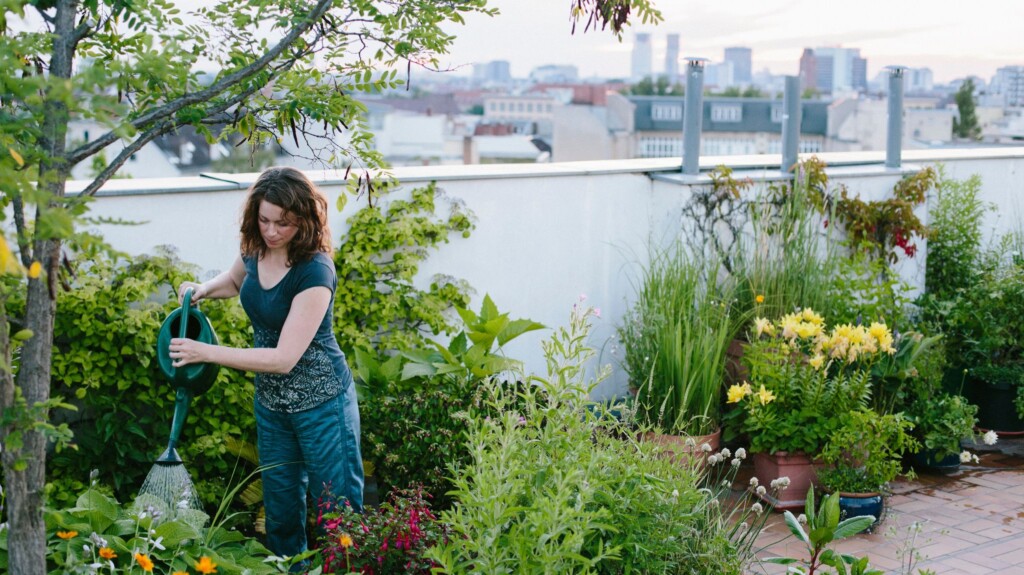Therapeutic gardens create spaces that resonate with nature and optimize your well-being. Such healing gardens constitute an umbrella term that defines various styles of gardens designed to serve the physical and mental health requirements of individuals or groups. A few places you may find a therapeutic garden include nursing homes, vocational rehabilitation facilities, and hospitals, along with botanical gardens, prisons, and nurseries. The physical and psychiatric value of these gardens has been observed throughout history.
These plant-related areas are crafted to facilitate a relaxing interaction with nature by both patients as well as their loved ones. The plants and walking paths are specially designed to offer the advantages of contemplative moments along with the physical activity.
How Your Therapeutic Garden Can Help You

Building your own therapeutic garden has amazing benefits for you and can take your family nearer to nature. By developing, designing, and keeping a therapeutic garden in your outdoor area, your garden can change from artwork to an event for visitors of all ages.
Design That Is Restorative
The initial step for a therapeutic garden comprises the design. Imagine each of the 5 senses and how you can mix plants and features to contain sensory stimulation. Vivid colors and a range of heights and shapes in plants, along with specific shapes and objects in focal points, can render the garden visually appealing. Regarding touch, textures are essential (running water, crunchy bark, soft leaves), as are pathways and elevated beds in order that the entire plants and features are convenient to reach. Taste and smell can often go side by side by utilizing fragrant fruits and herbs or edible flowers. Sound is a bit harder to include through plants, so objects can be employed to fetch sound into your garden. A water feature for a focal point can comprise the soothing sounds of flowing water, a bird feeder can interest beautiful chirping birds, and an assortment of flowers draws the buzz of bees. It is vital to combine different senses with every design option and plan to compose the garden activity in itself. Visitors can stroll barefoot across shallow pools and on pebble paths while treading in the garden under the trees.
Plant Based Settings
When constructing your garden, it is essential to know its purpose and your engagement in the process. The mental and physical benefits largely arise from the task of gardening, so it is crucial to take your time and cherish every moment. After your design has been done, the unending benefits can go on with the upkeep of the garden, building new experiences with every season, and resowing cuttings to maintain growth.
Healing gardens contain plant based environments to evoke the restorative effect of nature. There are therapeutic benefits of plants, its fragrance, and greenery.
Enjoy The Ambience
Whereas the gardening portion of the process is vital, it is also useful to spare the time to enjoy the fruits of your hard work. A therapeutic garden is an ideal spot to de-stress following a prolonged day or to allocate time to family. It can help you to remain physically active, and incorporating vegetables or fruits can promote healthy food choices. There is even the alternative of sharing your garden with others, as an essential portion of therapeutic horticulture constitutes social interaction. Being present and watchful in the space permits you to receive the bounty of nature within your own backyard. Rearing a therapeutic garden does not comprise a one-day project, it is an ongoing commitment. It is also a promise that can assist you, your family, and others you invite to it.
Avoid bright colours from getting overbearing by selecting one or two that are prominent and redoing them, building a non-threatening environment.
Therapeutic gardens are different from medicinal gardens in which plants having therapeutic qualities are cultivated. Therapeutic gardens are whole gardens with layouts and surroundings that aid sick people to become well or just to stimulate their senses, their concentration of interest, their legs, or their memory to better their feel-good factors. Therapeutic gardens greet the elderly, patients going through re-education, and the psychologically weak, autistic patients or patients afflicted with ailments like Alzheimer’s. They are situated in Health Centres such as mental homes, retirement homes, wellness centres, etc.
Benefits Of Therapeutic Gardens
Numerous studies have displayed that therapeutic gardens of all kinds can offer the following benefits:
- Psychological comfort
- Improvement in the general sense of hopefulness and well-being.
- Distraction
- Faster healing
- Enhanced air quality, resulting in fewer respiratory symptoms
- Lower levels of pain and reduced requirement for pain medication
- Decreases anxiety and stress
- Lower post-surgical complications
- Increased focus and productivity
- Reduced blood pressure
- Improves fitness and physical health in multiple ways
- Enhances your mental health
- Boost decision-making capacity and vent your creativity
- Better your mood and remove negative thoughts
- Greater social interaction with friends, community, and family
- Greater self-esteem and confidence
- Learn life skills and gardening
- Improved communication skills, numeracy, and literacy
Therapeutic gardens are also crafted to meet the special needs of the people utilizing them. A therapeutic garden designed for an individual residing with dementia, for instance, will possess an extra focus on layout and planning for ease of movement and to reduce the potential for disorientation. A garden built for a child having Autism Spectrum Disorder will lay stress on motor skill development and sensory elements.
Kinds Of Therapeutic Gardens
- Healing Gardens: Skilled nursing facilities, acute care hospitals, and other healthcare facilities.
- Alzheimer’s Gardens: Dementia residences and adult day care programs.
- Rehabilitation Gardens: Rehabilitation hospitals.
- Senior Community Gardens: Aided living, repeating care retirement communities.
- Restorative Gardens: Psychiatric hospitals.
- Cancer Gardens: Chemotherapy facilities.
- Meditation Gardens: Religious institutions and different faith-related settings.
- Enabling Gardens: Arboretum, vocational schools.
Elements For A Therapeutic Garden
Wind chimes: With a gentle breeze, the sound from wind chimes can shift the visitor to a soothing environment. They are also superb elements for interaction and perform best hung at a height where they can be touched.
Bird feeder: Plants aren’t the sole thing that can draw feathered friends. Dangling a bird feeder in the garden can assure a bright, joyful noise and alter the garden visuals with colour and movement.
Pebbles: The range of colours and shapes present make pebbles a wonderful addition for an extra sensory experience. They can be utilized in pathways to wander along barefoot or positioned amongst plants to touch and pick up.
Sand: Why limit the gentle, warm feeling of beach sand to the beaches? Including a beach sand way is great for travelling barefoot, or can be employed to build a play area for kids.
Stone: Another path alternative is stone, offering a sensory contrast to sand paths or pebbles. Thrilling visual shapes and designs can be tested by utilizing this versatile element.
Water features: Water controls many of the sensory boxes. A flowing water feature generates a relaxing noise that functions nicely to mask the sounds of nearby traffic or neighbours, together with including a sense of movement. A shallow pond is also a means to introduce water that permits interaction and touch with both feet and hands. Fish such as koi append another element.
Bottom Line
The therapeutic garden comprises an introductory element; it is being restored in modern times due to the extensive therapeutic benefits. It constitutes a natural means to lower stress, fatigue, tension, pain, depression, sadness, and anxiety. It elevates energy, positive mood, and perception of calm and promotes human-nature interactions. The importance of the discipline and the contribution it can render to advancing wellbeing and health has only started to be understood. Ongoing research studies will also contribute to evidence-related research and future implementation of the finest practices. Such garden spaces contribute to overall psychological wellness as well as physiological well-being.

